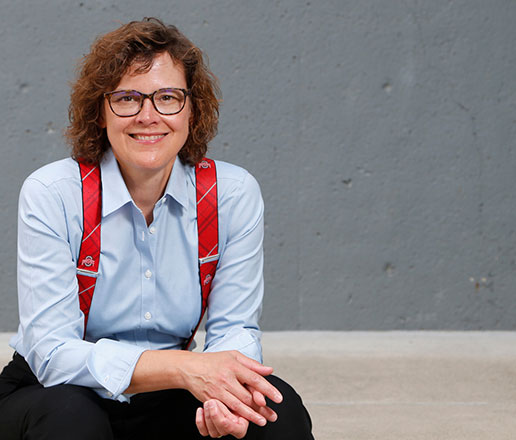Understanding social distancing and how it helps
It is not the same as isolation, quarantine or lockdown
By Amy Fairchild, Dean and College of Public Health

Social distancing is the least restrictive means to contain a pandemic. But considering the widespread misunderstanding about the term, it makes sense to start with what social distancing is not.
Social distancing is not the same as isolation. Isolation applies when someone is known or suspected to be infected with the novel coronavirus that causes COVID-19. It means that they stay away from everyone who is not infected.
Social distancing is not quarantine. Quarantine applies when someone has been exposed but is not yet sick (and may never get sick). Family members of those who are being isolated for COVID-19 must be quarantined for 14 days.
Social distancing is also not the same as a “lockdown,” a phrase that we have heard to describe actions in Italy. In Italy, officials barred movement. People still have some freedom of movement within neighborhoods, but officials have closed down all but essential businesses such as grocery stores.
When cities and states cancel mass gatherings, the message here is not that everyone needs to hide at home until the pandemic passes. Rather, the message is that none of us should be spending time in rooms where people are densely congregated. It means that we should each keep at least 3 and ideally 6 feet of space between us and the person next to us. Packed concert hall? Crowded bar? Both bad ideas. Walking trail? Dinner at your house with a couple of friends? Probably fine, but give them a warm smile rather than a handshake or a hug.
Because scientists believe that the virus is transmitted by respiratory droplets that are spread when someone coughs or sneezes, that 6-foot barrier prevents those droplets from entering the nose, mouth or eyes of another person. Conversations can feel a little awkward at 6 feet (or on conference calls). But it takes only a few minutes to get used to communicating at a safer distance.
We hear COVID-19 compared to the flu frequently. But we haven’t enacted mass social distancing measures for the flu since the 1918 Spanish flu pandemic.
They are necessary for COVID-19 because we have no vaccine like we do for the flu. Our population has no immunity. In addition, because this is a new virus in the human population, we don’t know the death rate but think it is between 0.25% and 3% — more deadly than the flu.
But the death rate isn’t the whole story. Many people may have lasting damage to their lungs or require a lengthy recovery. We have good reason to believe that the vast majority of COVID-19 cases will be mild. But because someone with a mild case can transmit infection that might prove deadly to someone else, health officials must think about the impact on the entire population.
There are two compelling reasons officials rely on social distancing.
First, some people — those over 60 and those with conditions such as diabetes and chronic respiratory illnesses that compromise their immune systems — are particularly vulnerable. For some groups, the death rate may be as high as 20%.
As a community, we owe it to our parents and our grandparents to protect them. We owe it to workers including nurses, law enforcement and teachers who work in jobs that put them at the greatest risk of infection.
Second, even though social distancing won’t stop cases cold, it can reduce the infection rate. Hospitals can manage only a certain number of cases a day. And typical illnesses and injuries don’t screech to a halt during a pandemic — a hospital that is overwhelmed with COVID-19 cases will struggle to handle the usual emergencies.
Even if we do not change the total number of people infected, if we can spread those cases over a period of weeks rather than days, hospitals can save more lives. We owe it to ourselves to protect the hospitals’ and public health systems’ ability to help us.
Social distancing may seem simple, yet combined with some basic handwashing practices, it works. But it works only if we believe that we owe it to one another to do all that we can to stop a pandemic.
This opinion piece also appeared in Ohio State News and The Columbus Dispatch.
About The Ohio State University College of Public Health
The Ohio State University College of Public Health is a leader in educating students, creating new knowledge through research, and improving the livelihoods and well-being of people in Ohio and beyond. The College's divisions include biostatistics, environmental health sciences, epidemiology, health behavior and health promotion, and health services management and policy. It is ranked 22nd among all colleges and programs of public health in the nation, and first in Ohio, by U.S. News and World Report. Its specialty programs are also considered among the best in the country. The MHA program is ranked 5th and the health policy and management specialty is ranked 21st.